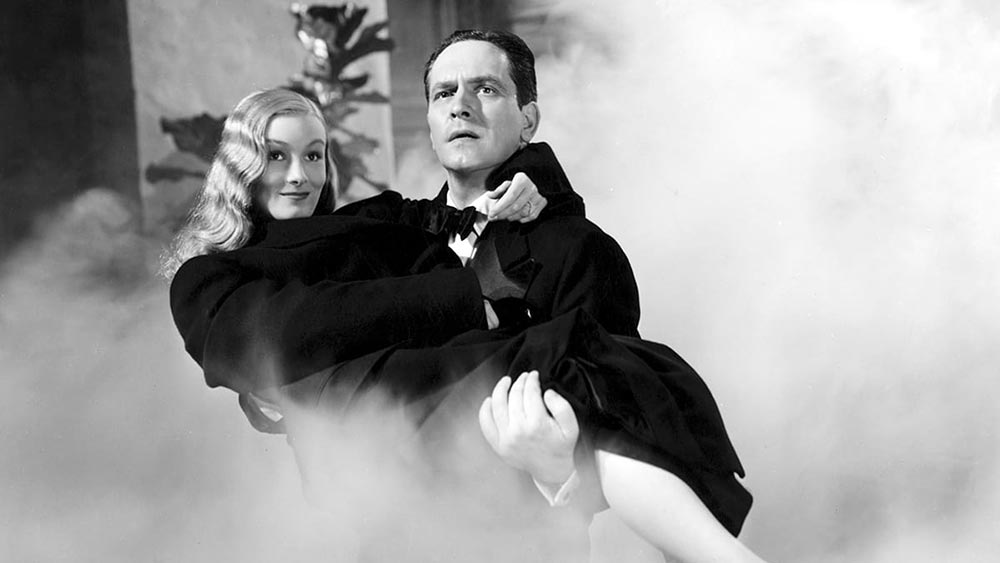Mischievous and smoldering in equal measure, Veronica Lake (Sullivan’s Travels) commands the 1942 romantic comedy I Married a Witch. While her early-’40s period of stardom was brief, this underrated, delightfully frivolous film showcases Lake’s sly charm.
The iconic blonde plays Jennifer, a 17th-century witch who, along with her father, is burned at the stake in Salem after being denounced by a Puritan named Jonathan Wooley. Before her death, Jennifer curses the Wooley family, ensuring that every male descendent will be unlucky in love. Centuries later, the father-daughter duo’s spirits are reawakened, and Jennifer takes human form in order to torture Wallace (Frederic March, who had previously won an Academy Award for his lead performance in Dr. Jekyll and Mr. Hyde, 1931), a living Wooley man who is slated for marriage and a gubernatorial win. When Jennifer accidentally drinks a love potion she had concocted for Wallace, her plan goes awry and the romantic tables turn.
The convincing chemistry between Lake and March drives the film, which is surprising considering the well-known acrimony between the two actors behind-the-scenes. In pre-production March was quoted as calling Lake “a brainless little blonde sexpot, void of any acting ability” and Lake responded by calling March a “pompous poseur” and (allegedly) playing pranks on him throughout filming. René Clair, who was previously renowned for his funny, often fantastical silent films in France (The Italian Straw Hat, 1928; Under the Roofs of Paris, 1930), utilizes charming visual gags that laid the groundwork for future witch-centric popular media such as Bewitched: broomsticks appear sentient and zip around, Lake works spells next to a bubbling black cauldron, and the disembodied spirits regularly travel around in the form talking wisps of smoke.
I Married a Witch screens tonight, January 13, and again on January 30, in a new digital restoration. It is part of “To Save and Project: The 19th MoMA International Festival of Film Preservation.”


